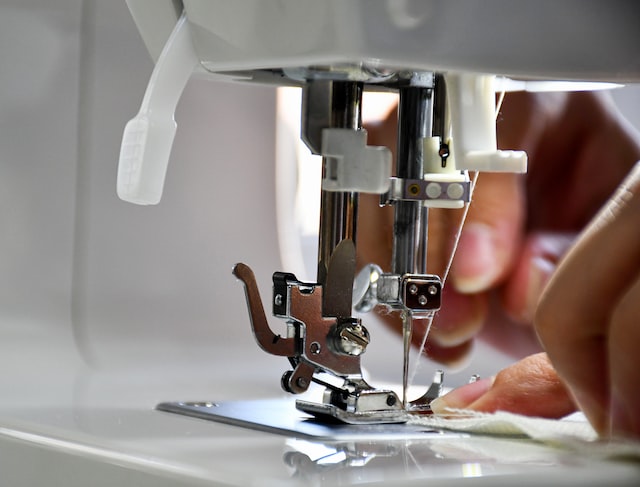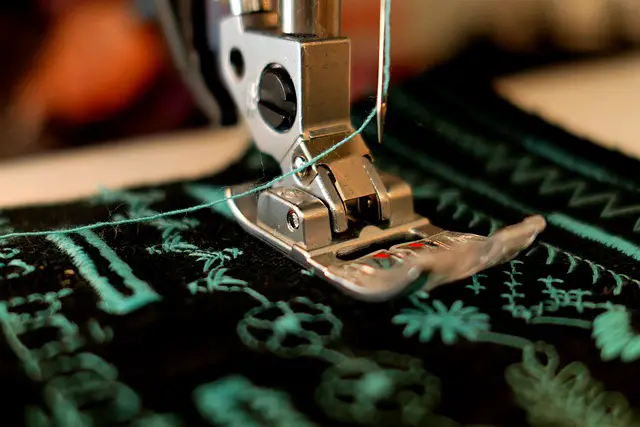How to Adjust Stitch Length on Sewing Machine? 4 Easy Steps

As a beginner, one of the most important skills to master when sewing is adjusting the stitch length on your sewing machine.
Stitch length determines how close together, or far apart the stitches are on your fabric. This can impact your sewing project’s strength, durability, and appearance.
In this article, we will walk you through how to adjust the stitch length on your sewing machine and offer tips and tricks for achieving the perfect stitch.
Understanding Stitch Length
Before we dive into how to adjust the stitch length on your sewing machine, it’s important to understand what stitch length is and how it affects your sewing.
Stitch length is measured in millimeters (mm) and refers to the distance between each stitch on your fabric.
Generally, a shorter stitch length (2.0 mm or less) is used for delicate fabrics, while a longer stitch length (3.0 mm or more) is used for heavier fabrics.
Your length will also depend on your stitch, such as a straight or zigzag stitch.
Why Adjusting Stitch Length is Important?
Adjusting stitch length on your sewing machine is an essential skill to learn, as it can affect the quality and appearance of your sewing project.
Here are some reasons why it’s important to adjust stitch length:
1. Fabric type: Different fabric types require different stitch lengths.
For example, a shorter stitch length is ideal for lightweight fabrics like silk, while a longer one is better for heavy fabrics like denim.
2. Seam strength: Adjusting stitch length can affect the strength of your seams.
A shorter stitch length will create more stitches per inch, resulting in a stronger seam, while a longer stitch length will create fewer stitches per inch, resulting in a weaker seam.

3. Decorative stitching: Adjusting stitch length can also be important when creating decorative stitching. For example, a longer stitch can create a bolder, more visible decorative stitch.
4. Overall appearance: The stitch length can also affect the overall appearance of your project.
A shorter stitch will produce a more precise and professional-looking stitch, while a longer one can create a more casual or relaxed look.
How to Adjust Stitch Length on Sewing Machine
Now that we have a basic understanding of stitch length let’s walk through the steps for adjusting it on your sewing machine.
Step 1: Locate the Stitch Length Dial
The first step is to locate the stitch length dial on your sewing machine.
This is typically located on the front or side of your machine and is marked with numbers that correspond to stitch length in millimeters.
Step 2: Select Your Stitch Length
Once you locate the stitch length dial, turn it to the desired length. Remember that the appropriate length will depend on your fabric type and the type of stitch you are using.
If you are unsure of the appropriate stitch length, refer to your sewing machine manual or consult with an experienced sewist.
Step 3: Test Your Stitch Length
Before beginning your sewing project, testing your stitch length on a scrap piece of fabric is important.
This will help you ensure that the stitch length is appropriate for your fabric and that your machine functions properly.
Step 4: Make Adjustments as Needed
If your stitch length is too long or too short, you can adjust it by turning the dial. Make small adjustments until you achieve the desired stitch length.
Tips and Tricks for Achieving the Perfect Stitch
Now that you know how to adjust the stitch length on your sewing machine, here are some tips and tricks for achieving the perfect stitch.
Tip 1: Use the Right Needle
Using the right needle for your fabric type can help ensure that your stitch length is even and consistent. Be sure to choose a needle appropriate for your fabric type and weight.
Tip 2: Keep Your Machine Clean and Maintained
Regular cleaning and maintenance of your sewing machine can help ensure it functions properly and produces even stitches.
Follow the manufacturer’s instructions for cleaning and maintaining your machine.
Tip 3: Use Quality Thread
High-quality thread can also help ensure that your stitches are even and consistent. Choose a thread that is appropriate for your fabric type and weight.
Tip 4: Practice, Practice, Practice
Like any skill, adjusting stitch length takes practice. Take the time to experiment with different stitch lengths and fabric types to find what works best for you.
Troubleshooting Stitch Length Problems
Sometimes, even with the right stitch length, your sewing machine can produce uneven stitches or other problems.
Here are some common stitch-length problems and their solutions:
1. Uneven stitches:
Improper tension, a dull needle, or a misaligned needle can cause uneven stitches. Try adjusting your tension, changing your needle, or re-threading your machine.
2. Skipped stitches:
Skipped stitches can occur when the needle fails to penetrate the fabric. A dull needle, incorrect needle size, or stitch length can cause this.
Try changing your needle, using the correct size, or adjusting your stitch length.

3. Breaking threads:
Breaking several factors, including tension, needle choice, or stitch length, can cause threads. Try adjusting your tension, changing your needle, or using a different stitch length.
4. Puckering fabric:
Puckering fabric can occur when the stitch length is too long, or the tension is too tight. Adjust your stitch length, loosen your tension, or use a stabilizer.
5. Skipped or inconsistent decorative stitches:
Skipped or dull needles or incorrect lengths can cause inconsistent decorative stitches. Try changing your needle or adjusting your stitch length.
Conclusion
Adjusting stitch length on your sewing machine is a fundamental skill for any sewist.
By following the steps outlined in this article and implementing our tips and tricks, you’ll be able to achieve the perfect stitch every time.
FAQs:
What stitch length should I use for lightweight fabrics?
A shorter stitch length (2.0 mm or less) is typically used for lightweight fabrics, such as chiffon or silk.
Can I adjust the stitch length while sewing?
Yes, you can adjust stitch length while sewing. However, adjusting a scrap piece of fabric is best before beginning your sewing project.
What should I do if my machine is producing uneven stitches?
Various factors, including improper tension or needle choice, can cause uneven stitches. Try adjusting your tension or changing your needle before adjusting your stitch length.
What type of stitch should I use for a stretchy fabric?
A stretch stitch, such as a zigzag or stretch stitch, is best for stretchy fabrics.
How often should I clean and maintain my sewing machine?
It’s recommended to clean and maintain your sewing machine after every use or at least once a month if you use it regularly. Be sure to follow the manufacturer’s instructions for cleaning and maintenance.



